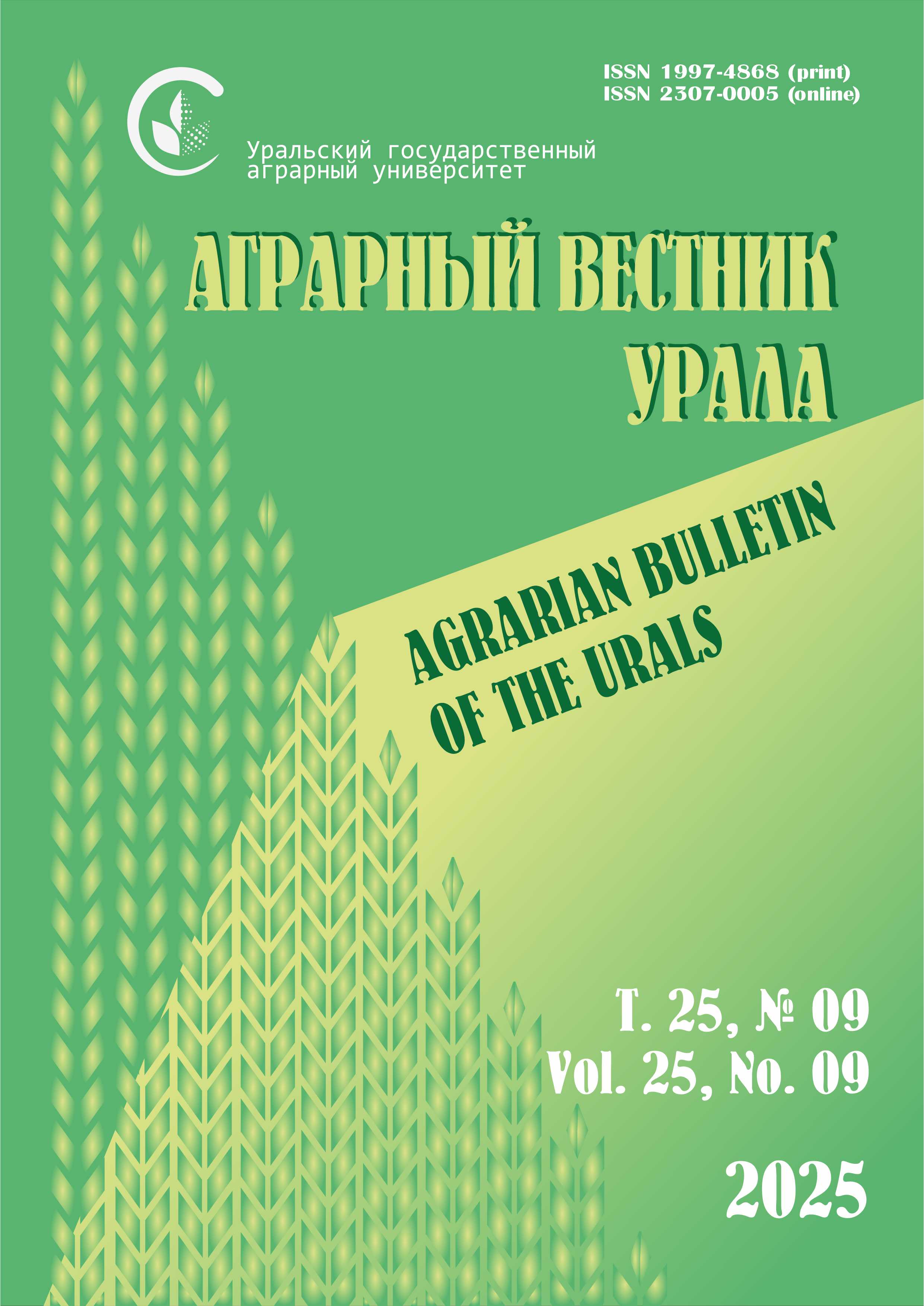Authors:
A. V. Stepanov,
O. A. Bykova,
O. V. Kostyunina,
S. D. Pilnikova
Ural State Agrarian University, Ekaterinburg, Russia
E-mail: This email address is being protected from spambots. You need JavaScript enabled to view it.
Abstract. Milk fat is the third main source of lipids for human nutrition. Fatty acids in milk fat have a heterogeneous composition due to differences in chain length, degree of saturation, etc. It has been scientifically proven that long-term consumption of trans-fatty acids causes various diseases of the human body; according to WHO recommendations, their maximum consumption should not exceed 1 % of total energy. A comprehensive study of the composition of fatty acids in cattle milk gives scientists the opportunity to use this trait in breeding work by selecting genotypes with a low content of trans-isomers and saturated fatty acids harmful to human health. The scientific novelty lies in the study of molecular genetic mechanisms for regulating the quantitative content of fatty acids and their trans-isomers in the fat fraction of cow’s milk. The purpose of the work is to identify allelic variants of SNPs associated with the fatty acid composition of cow’s milk and the content of trans isomers of unsaturated fatty acids in it. Research methods. The studies were carried out on cows of the Holstein black-and-white breed. The genetic profile of animals of the Holstein black-and-white breed was studied, SNPs significantly associated with the quantitative and qualitative content of fatty acids and their trans-isomers in the fat fraction of cow’s milk were identified. The fatty acid composition of cows’ milk was determined using a multiparameter automatic analyzer MilkoScan 7/Fossomatic 7 FT+ / DC (FOSS, Denmark). Results. Whole-genome genotyping was performed. Analyzing the content of fatty acids with different saturation of hydrogen bonds, a significant difference between the amount of fatty acids and genotypes, reliable values were established only for 5 SNPs. It was found that for four SNPs, the highest values of the content of fatty acids and trans-isomers were in homozygous genotypes ARSBFGL-NGS-41348GG; BTA-115852-no-rsAA; BTB-00771463GG; Hapmap46159-BTA-70956TT. A significant difference in the content of trans-fatty acid isomers in milk between genotypes was found only for SNP ARSBFGL-NGS-5502. The largest mass fraction of trans-isomers of unsaturated fatty acids was found in the milk fat of cows with the heterozygous genotype AG, which amounted to 0.076 g / 100 g and was 0.011 g / 100 g and 0.032 g / 100 g (P ≤ 0.01) more compared to heterozygous genotypes GG and AA, respectively.
Keywords: cattle, genome-wide genotyping, fatty acids, trans isomers of fatty acids, DNA markers.
For citation: Stepanov A. V., Bykova O. A., Kostyunina O. V., Pilnikova S. D. Opredelenie vzaimosvyazi genotipov SNP s soderzhaniem zhirnykh kislot razlichnoy prostranstvennoy konfiguratsii v moloke korov [Determination of the relationship between SNP genotypes and the content of fatty acids of various spatial configurations in cow milk] // Agrarian Bulletin of the Urals. 2024. Vol. 24, No. 01. Pp. 108‒118. DOI: 10.32417/1997-4868-2024-24- 01-108-118 (In Russian.)
Download the full text of the article












